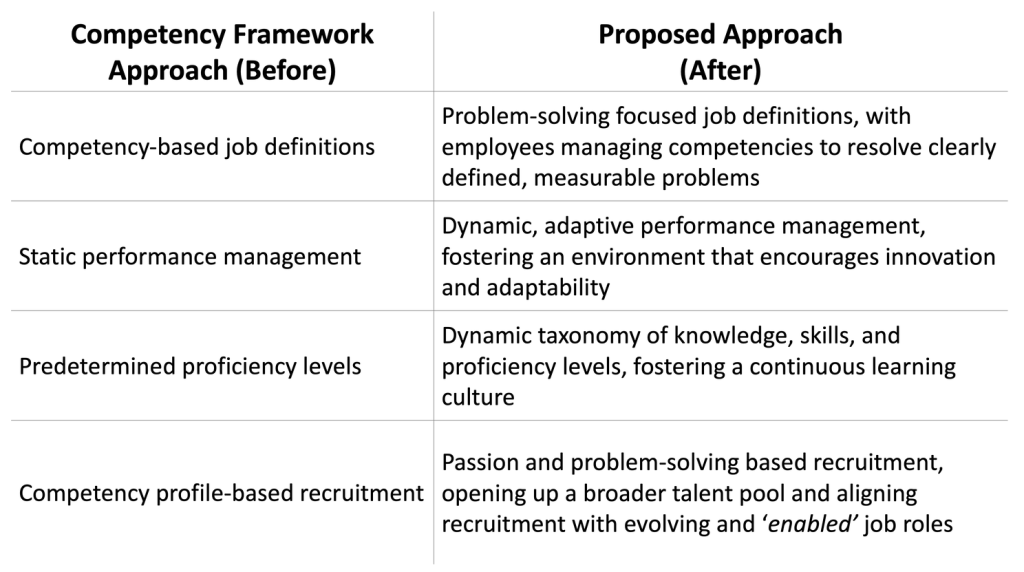- Problem-solving-focused job definitions: Let’s define job roles according to the problems they need to solve, not the competencies they need to possess. With this approach, employees are empowered to manage their competencies with the aim of resolving clearly defined, measurable problems. This shift fosters individual accountability and adaptability, crucial traits in a rapidly evolving workplace.
- Dynamic, adaptive performance management: Rather than assessing performance against a static list of competencies, let’s focus on how employees generate, implement, and adapt ideas to achieve results. This dynamic, adaptive performance management encourages innovation and adaptability, promoting a culture where effort and change are valued.
Dynamic taxonomy of knowledge, skills, and proficiency levels: Instead of pre-determining proficiency levels, let’s develop a dynamic taxonomy that encourages continuous learning. This approach helps employees to understand and articulate their skills, recognize gaps, and continuously improve. The focus is on applying knowledge and skills to perform tasks effectively enough to solve defined problems.
- Passion and problem-solving-based recruitment: Instead of fitting candidates to a competency profile, concentrate on identifying individuals with a demonstrated enthusiasm for solving particular problems that deeply resonate with them. Seek candidates who display self-awareness of this connection through their previous experiences. This method not only expands the available talent pool but also adapts recruitment to the changing nature of job positions.
The proposed changes don’t dismiss the value of competencies; instead, they encourage employees to take ownership of their development, embracing a growth mindset. This shift from static competency frameworks to dynamic problem-solving and continuous learning can usher in a new era of performance and development in the corporate world.
Here’s a comparative table that encapsulates these shifts:





